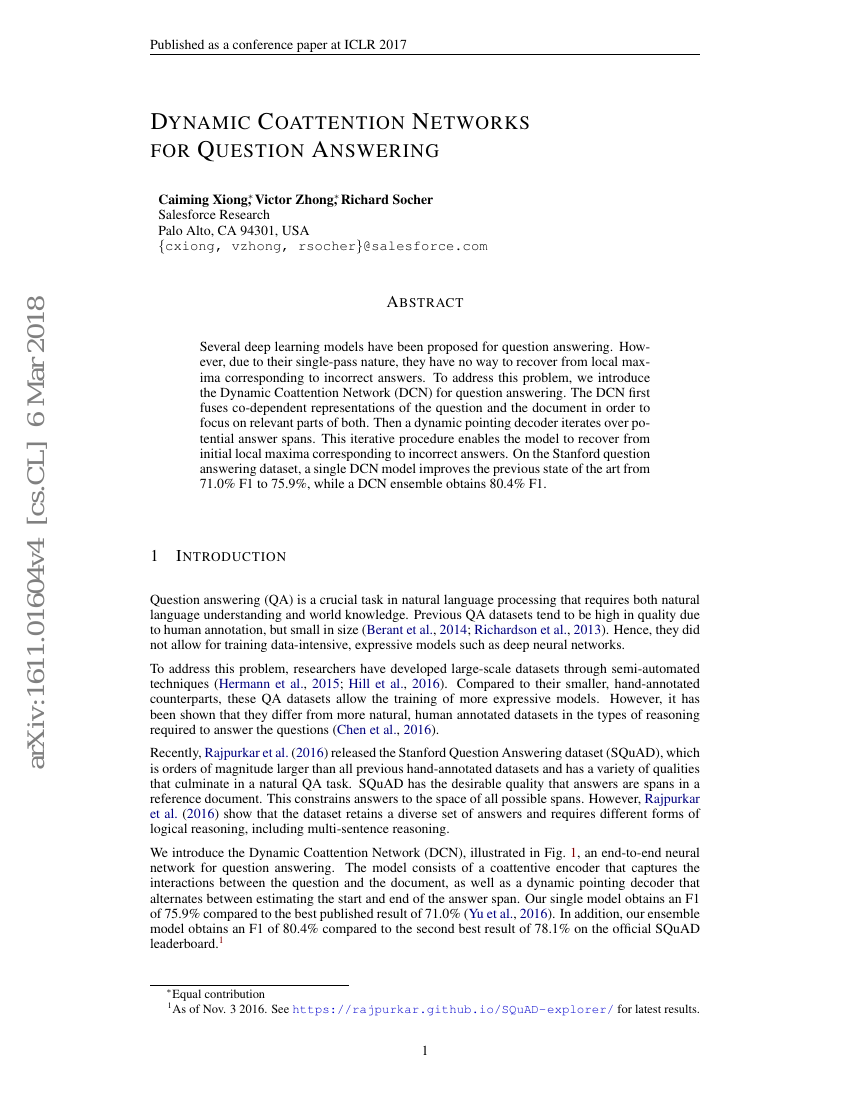Command Palette
Search for a command to run...
Caiming Xiong; Victor Zhong; Richard Socher

Abstract
Several deep learning models have been proposed for question answering. However, due to their single-pass nature, they have no way to recover from local maxima corresponding to incorrect answers. To address this problem, we introduce the Dynamic Coattention Network (DCN) for question answering. The DCN first fuses co-dependent representations of the question and the document in order to focus on relevant parts of both. Then a dynamic pointing decoder iterates over potential answer spans. This iterative procedure enables the model to recover from initial local maxima corresponding to incorrect answers. On the Stanford question answering dataset, a single DCN model improves the previous state of the art from 71.0% F1 to 75.9%, while a DCN ensemble obtains 80.4% F1.
Code Repositories
Benchmarks
| Benchmark | Methodology | Metrics |
|---|---|---|
| open-domain-question-answering-on-squad11 | DCN | EM: 66.2 |
| question-answering-on-squad11 | Dynamic Coattention Networks (ensemble) | EM: 71.625 F1: 80.383 |
| question-answering-on-squad11 | Dynamic Coattention Networks (single model) | EM: 66.233 F1: 75.896 |
| question-answering-on-squad11-dev | DCN | EM: 65.4 F1: 75.6 |
Build AI with AI
From idea to launch — accelerate your AI development with free AI co-coding, out-of-the-box environment and best price of GPUs.